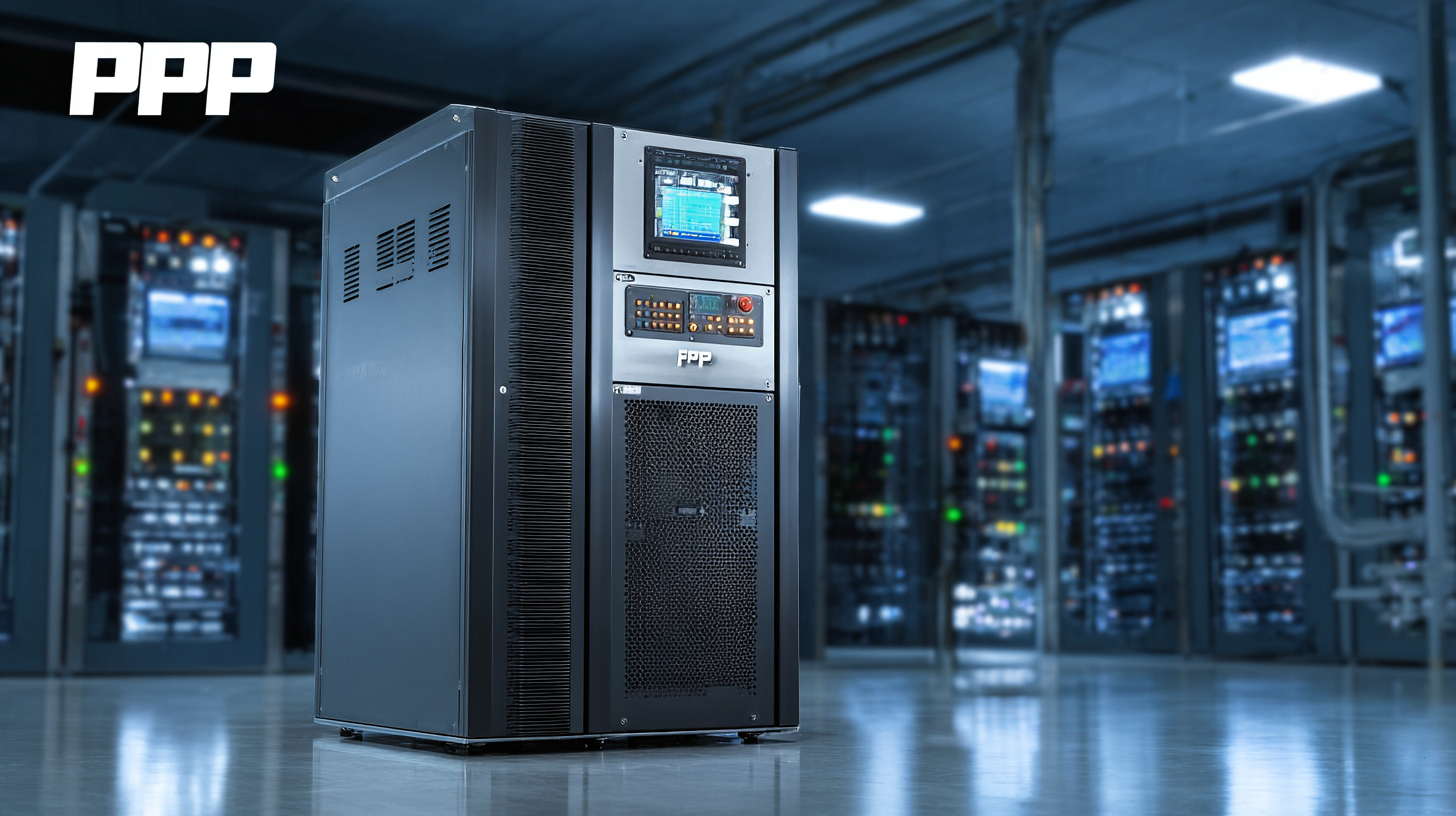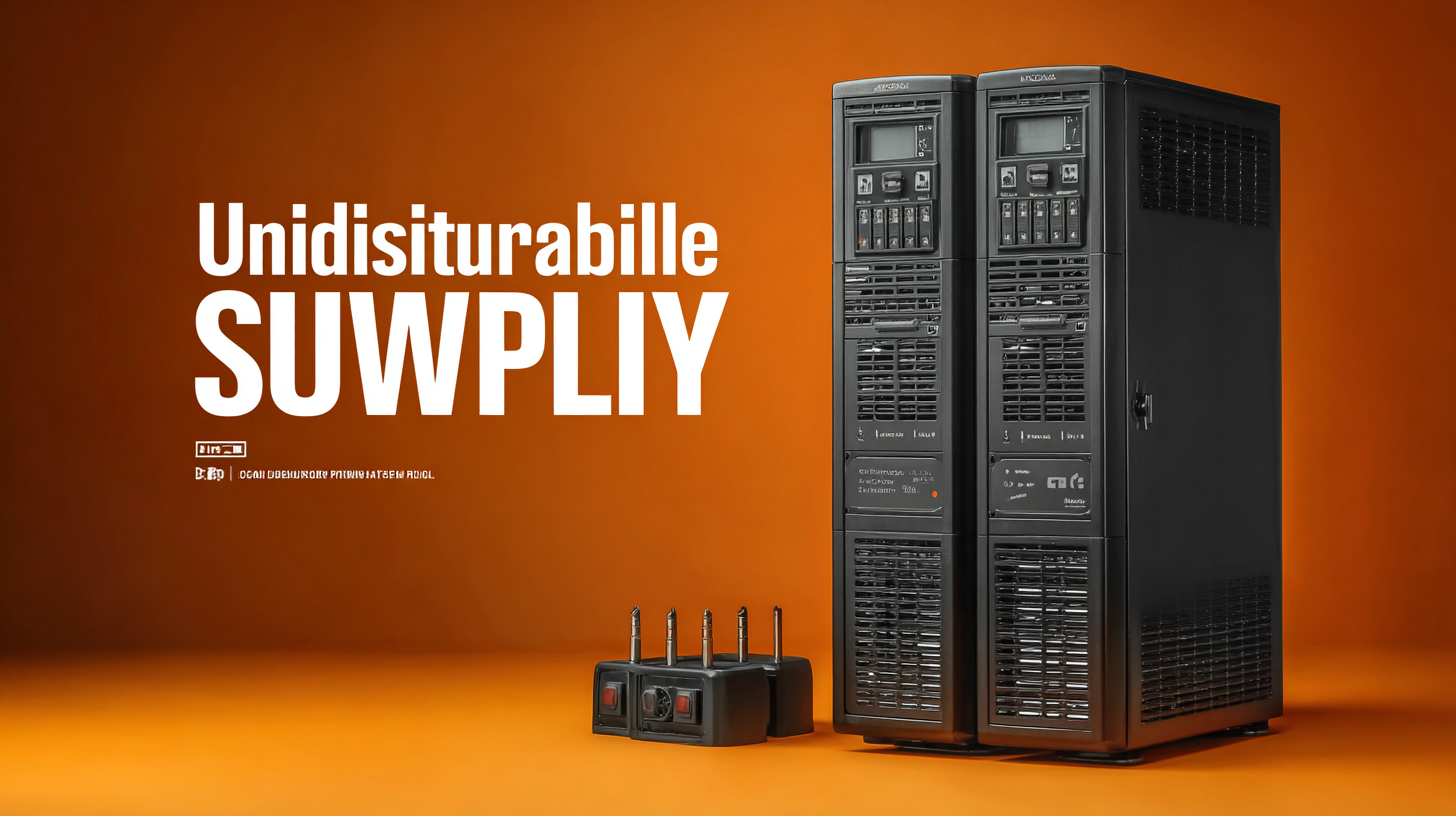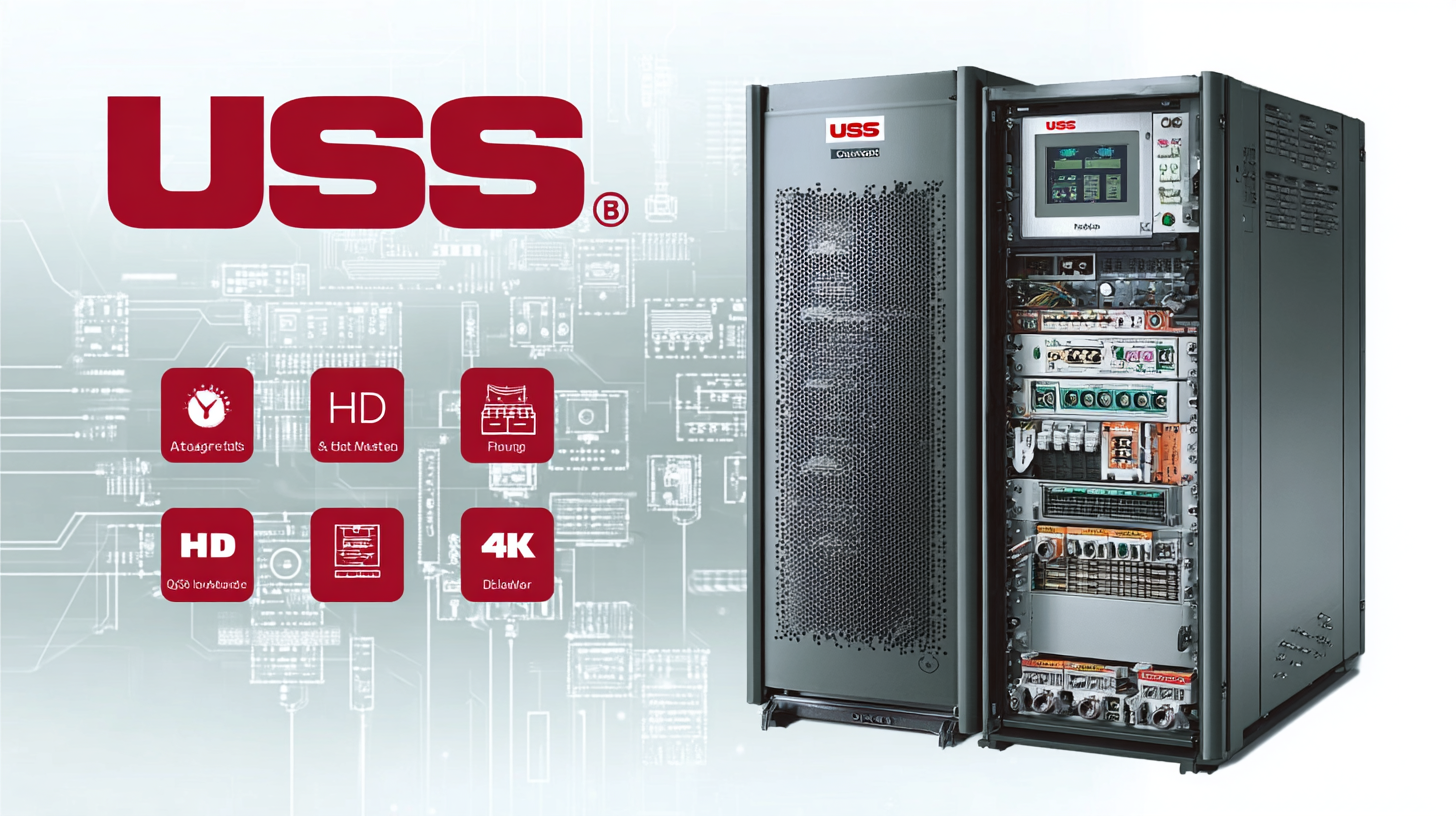Top Strategies for Selecting the Best Uninterruptible Power Supply to Enhance Operational Reliability
In today's fast-paced digital environment, the operational reliability of an organization hinges significantly on its power supply systems. An Uninterruptible Power Supply (UPS) plays a critical role in maintaining business continuity, especially in industries where downtime can lead to substantial financial and reputational losses. According to a report by the International Data Corporation (IDC), businesses lose an average of $100,000 for every hour of downtime, emphasizing the need for reliable power solutions. Moreover, a study by MarketsandMarkets predicts the global UPS market will reach $14.94 billion by 2027, driven by the increasing reliance on technology and rise in disruptions caused by power outages. With a growing array of alternatives available, selecting the right UPS becomes paramount for organizations aiming to bolster their operational resilience and safeguard vital operations against unforeseen disruptions.

Understanding the Importance of Uninterruptible Power Supply in Critical Operations
In today's fast-paced digital landscape, the significance of an Uninterruptible Power Supply (UPS) cannot be overstated, especially in critical operations that demand unwavering reliability. A UPS acts as a crucial safety net, providing backup power during outages and mitigating the risk of data loss, equipment damage, and operational downtime. As organizations increasingly rely on technology, the necessity of a robust UPS system to maintain seamless operations has become paramount. This is particularly vital in sectors like healthcare, finance, and manufacturing, where even the briefest interruption can lead to substantial consequences.
The global market for rotary uninterruptible power supplies is projected to experience significant growth, anticipated to reach approximately $837.2 million by 2025 and soar to $1.172 billion by 2033, reflecting a compound annual growth rate of 4.3%. This trend underscores the growing recognition of UPS systems as indispensable components of reliable infrastructure. As businesses evolve and adapt to new challenges, investing in quality UPS solutions will not only safeguard their operations but also enhance overall efficiency and trustworthiness in their service delivery. Opting for the right UPS is crucial for organizations aiming to fortify their operational resilience against the unpredictability of power failures.

Key Considerations for Assessing Power Needs Before UPS Selection
When selecting an uninterruptible power supply (UPS), one of the critical steps is to assess your organization's actual power needs. Understanding the total wattage of the devices you intend to protect is essential. This means tallying up the wattage of all equipment, including servers, networking hardware, and other crucial systems. A reliable UPS should have the capacity to handle at least 20-30% more than your total wattage estimate to account for any additional devices or unexpected surges.
Tip: To effectively gauge your power needs, consider investing in a power meter. This tool provides precise readings of how much power each device consumes, allowing for a more accurate calculation of required UPS capacity.
Additionally, it’s important to evaluate the runtime you need during a power outage. How long will your operations depend on the UPS to keep running? Different UPS models offer varying runtimes; thus, select one that aligns with your operational requirements. If extended uptime is necessary, consider a UPS with external battery options for increased runtime flexibility.
Tip: Create a priority list of devices in your setup, distinguishing between critical and non-critical equipment. This approach will not only help in determining the necessary capacity but also in selecting a UPS that meets your operational priorities efficiently.
Evaluating UPS Types: Online, Line-Interactive, and Standby for Your Business
When selecting an uninterruptible power supply (UPS), understanding the differences between online, line-interactive, and standby UPS systems is essential for enhancing operational reliability. Online UPS systems provide continuous power, converting incoming AC power to DC power before re-converting it back to AC, ensuring zero transfer time during outages. This feature is particularly beneficial for sensitive equipment that requires stable and clean power, making it ideal for data centers and healthcare facilities.
In contrast, line-interactive UPS systems allow for some voltage fluctuations without switching to battery power, making them a cost-effective option for businesses facing minor power issues. They are well-suited for environments where power quality is relatively stable. Finally, standby UPS systems, which are the most basic type, provide battery backup only during outages, switching when a power failure is detected. While they are often the most affordable choice, they may not offer the reliability needed for critical operations.
As the UPS market in the Asia-Pacific region is projected to grow significantly, with forecasts indicating an increase from $580,560 million in 2024 to $1,100,602 million by 2032, businesses must carefully evaluate their UPS options to match their operational demands and enhance reliability.
Comparative Analysis: Leading UPS Brands and Their Performance Metrics
When it comes to choosing the best Uninterruptible Power Supply (UPS) for enhancing operational reliability, a comparative analysis of leading brands can provide valuable insights. Brands like APC, CyberPower, and Eaton stand out in the UPS market due to their robust performance metrics and reliability standards. For example, APC's Back-UPS series offers excellent battery backup and surge protection, making it a popular choice for both home and office environments. The critical metrics to consider include runtime, efficiency ratings, and total harmonic distortion, which play a significant role in operational dependability.

CyberPower, on the other hand, is known for its cost-effective solutions without compromising on quality. Their CP1500PFCLCD model is a testament to this, featuring a pure sine wave output that is essential for sensitive electronics. When comparing performance metrics, it’s essential to assess the inverter's efficiency and the time it takes to recharge the batteries.
Eaton’s 5P and 9P series also deliver high-performance levels with advanced management software, allowing users to monitor and manage their UPS systems proactively. Evaluating these key performance indicators across brands can lead to a well-informed decision, ultimately enhancing the overall reliability of power supply systems in various operational settings.
Budgeting for Reliability: Cost vs. Efficiency in UPS Choices
When considering the purchase of an Uninterruptible Power Supply (UPS), balancing cost and efficiency is crucial for ensuring operational reliability. It's easy to gravitate towards the lowest price point, but this approach may result in compromised performance and increased long-term costs. Investing in a higher-quality UPS can lead to significant savings in downtime and equipment damage, making it a wise financial decision. Additionally, understanding the specific power needs of your equipment helps in selecting a UPS that not only fits your budget but also enhances overall efficiency.
Moreover, it's essential to evaluate the total cost of ownership. This includes not just the upfront price, but also maintenance, energy consumption, and potential downtime costs. A more efficient UPS can consume less energy, translating to lower utility bills and a reduced carbon footprint. Brands that offer modular designs or allow for easy upgrades should also be considered, as these features can provide flexibility in adapting to future power needs without incurring substantial additional costs. By weighing these factors carefully, businesses can make informed decisions that maximize reliability without sacrificing financial viability.

